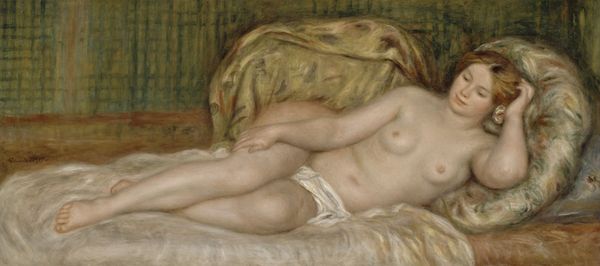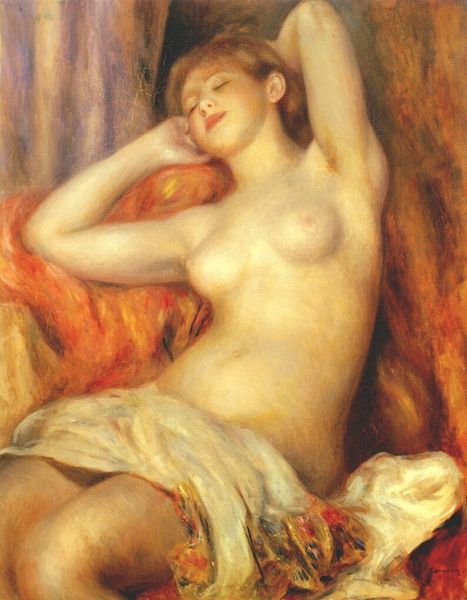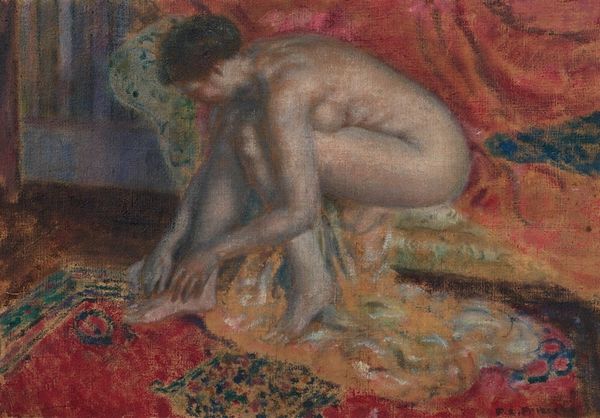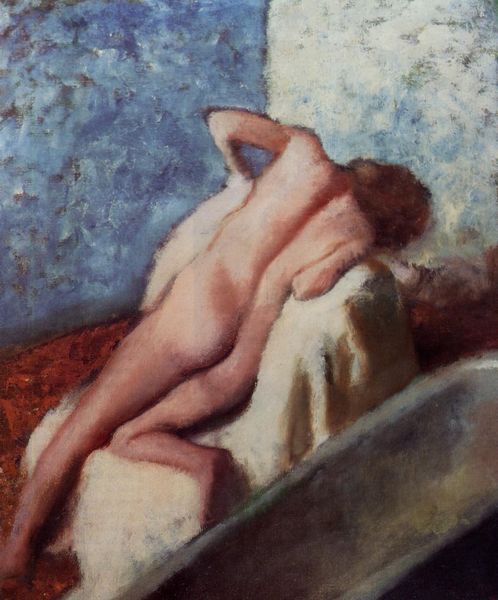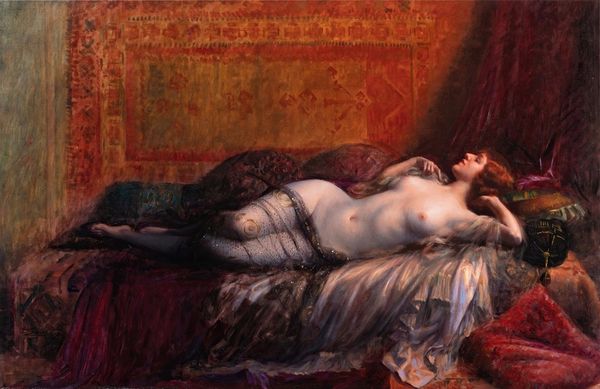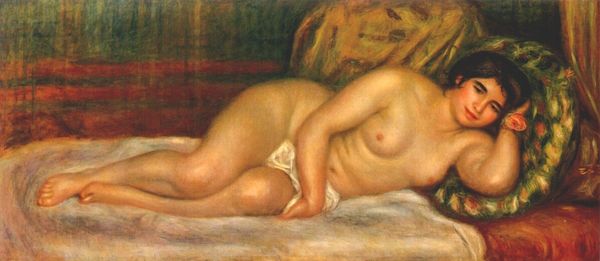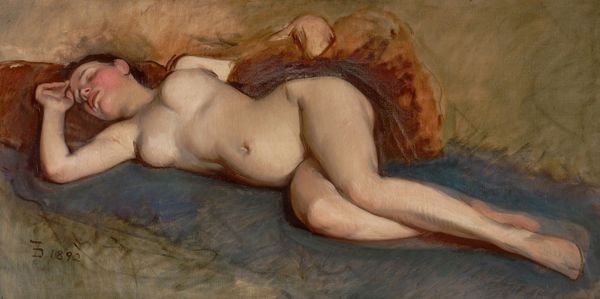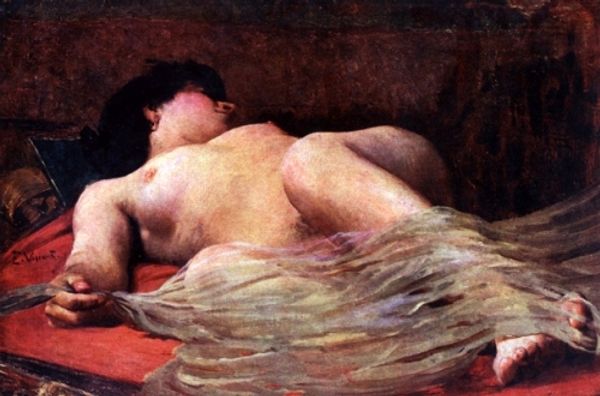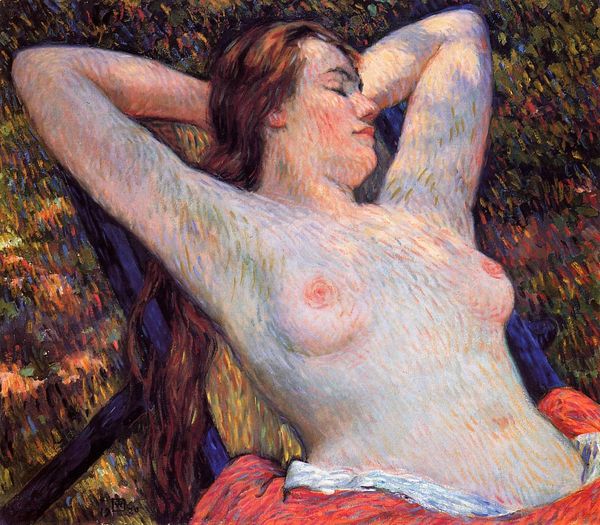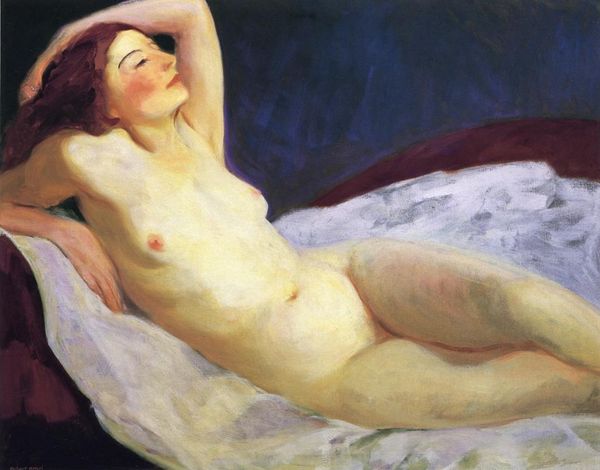
Copyright: Public domain
Editor: This is Theo van Rysselberghe’s “Etude of Female Nude” from 1914, an oil painting. The texture looks very soft, almost like velvet. How would you approach interpreting a piece like this? Curator: I’m drawn to the compositional elements. Notice how the diagonal of the figure intersects with the implied diagonal of the patterned divan. This creates a tension that is reinforced by the contrast between the smoothness of the flesh and the textured surfaces. Consider, too, how color temperature separates elements, with a juxtaposition of cool blue tones against warmer flesh tones and the blanket. What effects are produced by the composition? Editor: I see that the repetition of colors makes it feel more harmonious. It's very dreamlike. Curator: Exactly. The painting explores how patterns contribute to the construction of a space within the picture. Look at how the pillow blends and separates the figure. How might those structures serve meaning in the composition? Editor: I hadn't considered the patterns as part of the composition so directly before, it really affects how the nude exists in the space. Curator: These elements collectively contribute to the painting's structural integrity, moving beyond mere representation to engage the viewer on a purely visual, almost abstract, plane. Editor: I never looked at nudes in terms of structures but I think it really opens my view on it. Thank you! Curator: You're welcome. Considering art with attention to intrinsic qualities allows one to really deconstruct how meanings arise in it.
Comments
No comments
Be the first to comment and join the conversation on the ultimate creative platform.
